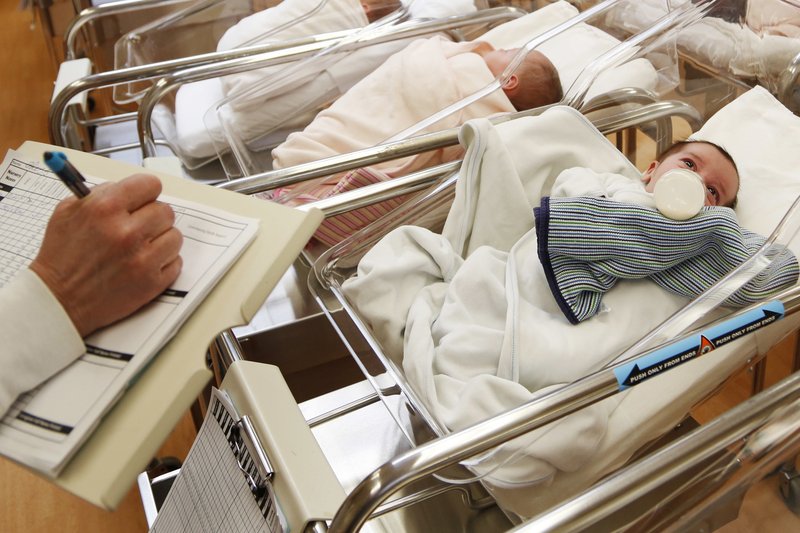NEW YORK -- U.S. birthrates declined last year for women in their teens, 20s and 30s, leading to the fewest babies in 30 years, according to a government report released Thursday.
Experts said several factors may be driving the declines, including shifting attitudes about motherhood and changing immigration patterns.
The provisional report, based on a review of more than 99 percent of the birth certificates filed nationwide, counted 3.853 million births last year. That's the lowest tally since 1987.
Births have been declining since 2014, but 2017 saw the greatest year-to-year drop -- about 92,000 fewer than the previous year.
That was surprising, because baby booms often parallel economic booms, and last year was a period of low unemployment and a growing economy.
But other factors are likely at play, experts said.
One may be shifting attitudes about motherhood among millennials, who are in their prime childbearing years right now. They may be more inclined to put off childbearing or have fewer children, researchers said.
Another may be changes in the immigrant population, who generate nearly a quarter of the babies born in the U.S. each year. For example, Asians are making up a larger proportion of immigrants, and they have typically had fewer children than other immigrant groups.
Also, use of IUDs and other long-acting forms of contraception has been increasing.
Perhaps most surprising, experts said, birthrates for women in their 30s fell slightly, dipping 2 percent for women ages 30 to 34 and 1 percent for women 35 to 39.
Birthrates for women in their 30s had been rising steadily to the highest levels in at least half a century, and women in their early 30s recently became the age group that has the most babies.
That decline raised some experts' eyebrows, but they also noted the dip was very small.
"It's difficult to say yet whether it marks a fundamental change or it's just a blip," said Hans-Peter Kohler, a University of Pennsylvania demographer who studies birth trends.
The Centers for Disease Control and Prevention report also found that the rate of births to women ages 15 to 44, known as the general fertility rate, sank to a record low of about 60 per 1,000.
The only group with higher birthrates in 2017 were women in their early 40s, a 2 percent rise from the year before, according to the report. The rate has been rising since the early 1980s.
The report also found that cesarean section rate rose by a tiny amount after having decreased four years. Studies have shown C-sections are more common in first-time births involving older moms.
Rates of preterm and low-birth-weight babies, meanwhile, rose for the third-straight year, according to the report.
Meanwhile, birthrates for teens continued to nose-dive, as they have since the early 1990s. In 2017, they dropped 7 percent from the year before, the report said.
Rates for women in their 20s continued to fall -- by 4 percent -- and hit record lows.
Another notable finding: The current generation is getting further away from having enough children to replace itself.
The U.S. once was among a handful of developed countries with a fertility rate that ensured each generation had enough children to replace it.
The rate in the U.S. now stands less than the standard benchmark for replacement. It's still above countries such as Spain, Greece, Japan and Italy, but the gap appears to be closing.
A decade ago, the estimated rate was 2.1 children per U.S. woman. In 2017, it fell below 1.8, hitting its lowest level since 1978.
"That's a pretty remarkable decline," said John Santelli, a Columbia University professor of population and family health and pediatrics.
A Section on 05/18/2018
